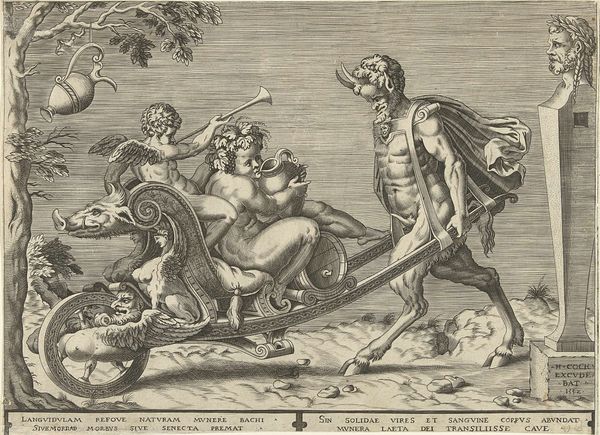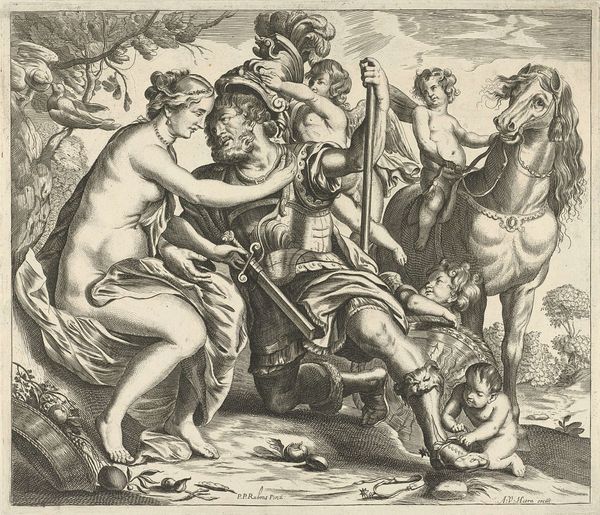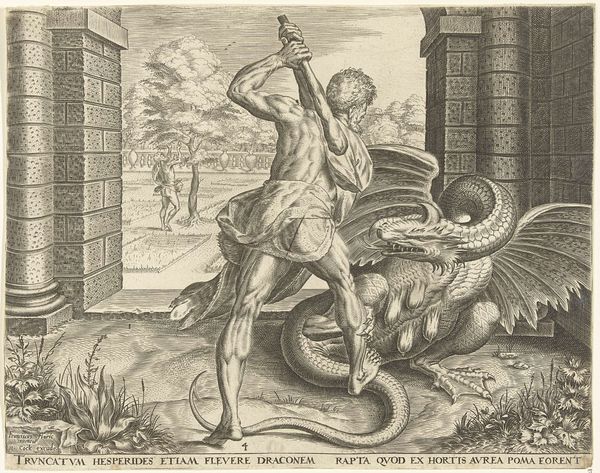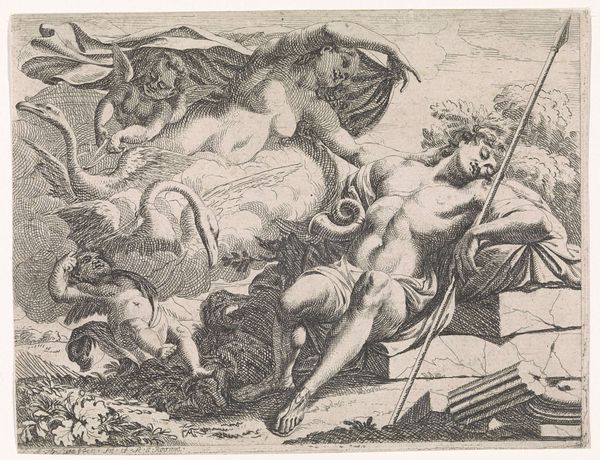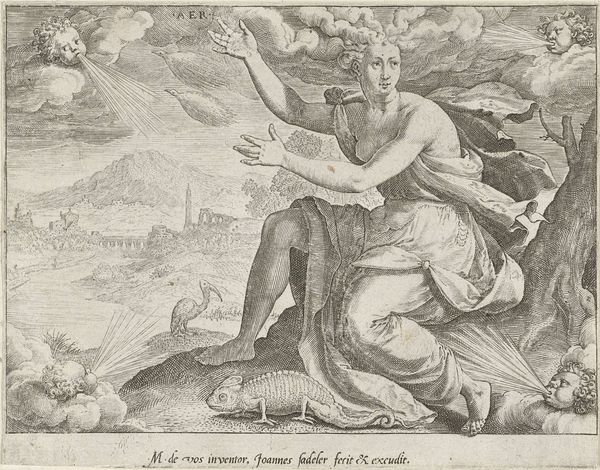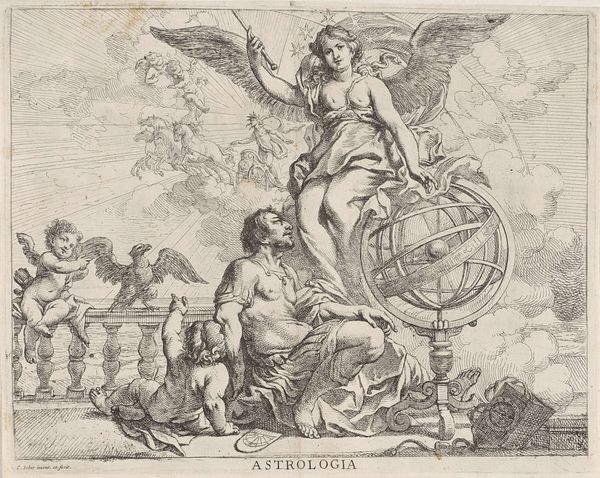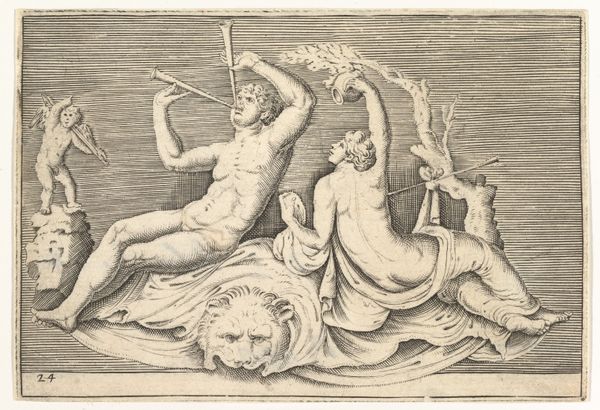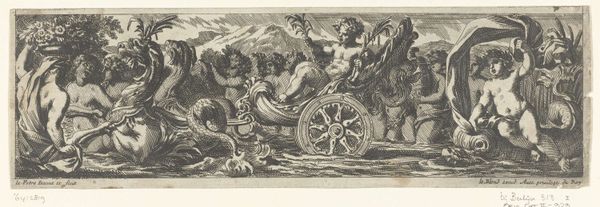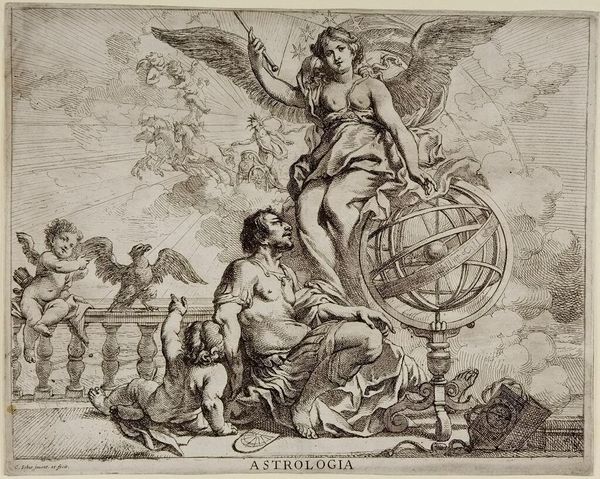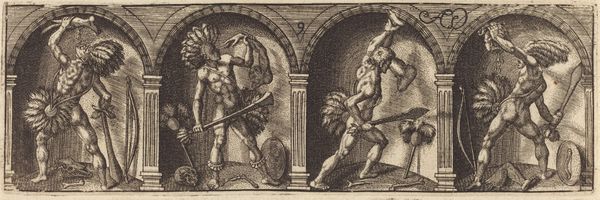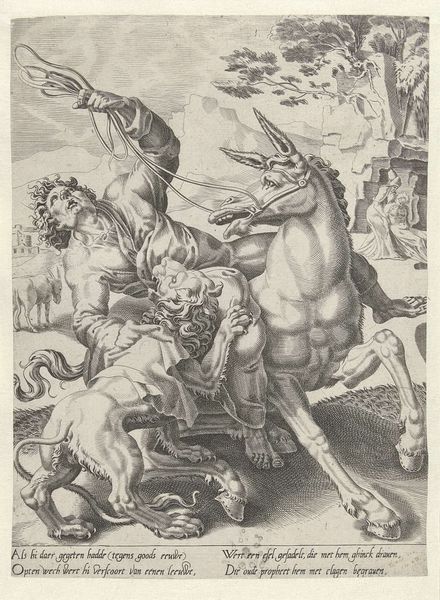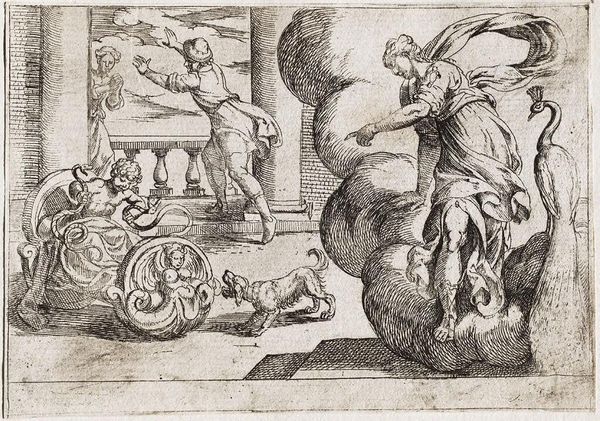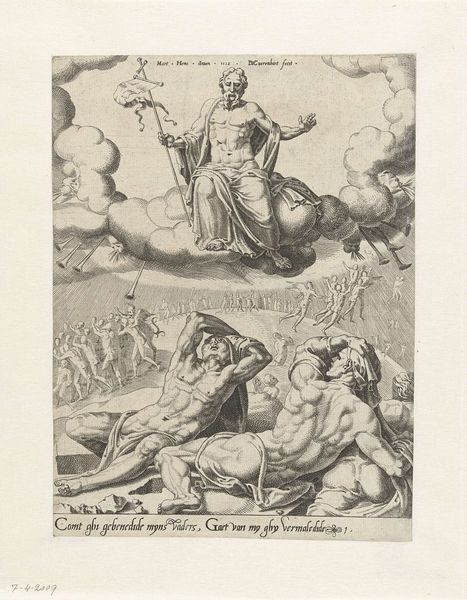
print, engraving
#
allegory
# print
#
pen illustration
#
landscape
#
mannerism
#
figuration
#
engraving
Dimensions: height 80 mm, width 113 mm
Copyright: Rijks Museum: Open Domain
Curator: Here we have "Venus en Amor", an engraving crafted by Cornelis Bos in 1546, currently residing here at the Rijksmuseum. It's quite intricate, don't you think? Editor: Indeed, immediately I'm struck by its almost severe linearity. The cross-hatching creates this overall sense of depth and shadow but also flattens the space somewhat, containing the exuberance of the subject matter. Curator: Well, let's consider Venus, seated regally on her chariot. Notice how the putti are arranged. Some propel the vehicle while others accompany Amor who seems ready to inflict desire with his bow and arrow. This speaks volumes about the iconography associated with Venus and how she commands even the powerful cupid. Editor: I find it quite fascinating to look at Cupid in relationship to the doves—what stories of love or peace, perhaps betrayal, can we see whispered here, especially with the dove leading the others, staring at a different destiny! What tensions arise in this Mannerist allegory with its exaggerated musculature and elongated figures! Curator: Don't you agree it's representative of the Mannerist style in its departure from High Renaissance ideals of perfect balance? Note the artist’s concentration on refined detail and almost ornamental character to the human form, down to the complex rendering of the background with delicate horizontal lines. Editor: Right—Cornelis has composed an allegory with precise placement of objects and characters. As you mentioned earlier, the landscape serves not to provide background, but really, to push the drama forward. Consider that line Cupid seems to follow along; a stage of infinite love that perhaps continues forever with such repetition! Curator: Absolutely. Ultimately, the strength of this print resides not merely in its allegorical content, but in the highly disciplined graphic treatment; Cornelis used such clean lines! It emphasizes its themes in a tangible visual form, one designed to delight our viewers through artistic excellence as much as rich symbolism. Editor: I appreciate how analyzing it on its visual properties draws out many cultural associations, it almost feels as though the composition itself tells us so much, allowing for multiple interpretations of a timeless encounter between Love and Desire.
Comments
No comments
Be the first to comment and join the conversation on the ultimate creative platform.
